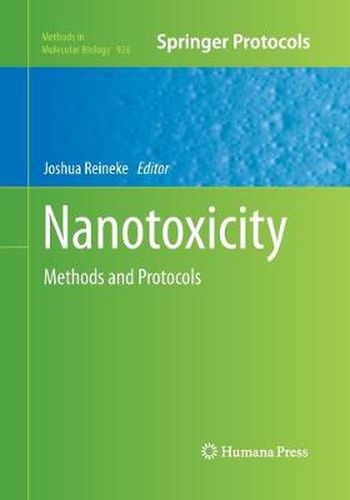Readings Newsletter
Become a Readings Member to make your shopping experience even easier.
Sign in or sign up for free!
You’re not far away from qualifying for FREE standard shipping within Australia
You’ve qualified for FREE standard shipping within Australia
The cart is loading…






This title is printed to order. This book may have been self-published. If so, we cannot guarantee the quality of the content. In the main most books will have gone through the editing process however some may not. We therefore suggest that you be aware of this before ordering this book. If in doubt check either the author or publisher’s details as we are unable to accept any returns unless they are faulty. Please contact us if you have any questions.
The field of nanotechnology has developed very rapidly over the past decade lending great promise to medical applications in drug delivery, therapeutics, and biological imaging. Due to the great promise, rapid development, and broad application of nanomaterials, it is imperative that researchers from development through application seek a thorough understanding of nanotoxicity. Nanotoxicity: Methods and Protocols address the special considerations when applying toxicity studies to nanomaterials and detail newly developed methods for the study of nanotoxicity. These diverse methods span in vitro cell culture, model tissues, in situ exposure, in vivo models, analysis in plants, and mathematical modeling, proving to be relevant to pharmaceutical scientists, material scientists, bioengineers, toxicologists, environmentalists, immunologists, and cellular and molecular biologists, to name a few. As part of the highly successful Methods in Molecular Biology ™, chapters include introductions to their respective topics, lists of the necessary materials and reagents, step-by-step, readily reproducible laboratory protocols, and tips on troubleshooting and avoiding known pitfalls.
Comprehensive and cutting-edge, Nanotoxicity: Methods and Protocols aims to diversify the capabilities of current researchers involved in nanotoxicology and to enable researchers in related fields to expand their knowledge of how nanomaterials interface with the biological environment.
$9.00 standard shipping within Australia
FREE standard shipping within Australia for orders over $100.00
Express & International shipping calculated at checkout
This title is printed to order. This book may have been self-published. If so, we cannot guarantee the quality of the content. In the main most books will have gone through the editing process however some may not. We therefore suggest that you be aware of this before ordering this book. If in doubt check either the author or publisher’s details as we are unable to accept any returns unless they are faulty. Please contact us if you have any questions.
The field of nanotechnology has developed very rapidly over the past decade lending great promise to medical applications in drug delivery, therapeutics, and biological imaging. Due to the great promise, rapid development, and broad application of nanomaterials, it is imperative that researchers from development through application seek a thorough understanding of nanotoxicity. Nanotoxicity: Methods and Protocols address the special considerations when applying toxicity studies to nanomaterials and detail newly developed methods for the study of nanotoxicity. These diverse methods span in vitro cell culture, model tissues, in situ exposure, in vivo models, analysis in plants, and mathematical modeling, proving to be relevant to pharmaceutical scientists, material scientists, bioengineers, toxicologists, environmentalists, immunologists, and cellular and molecular biologists, to name a few. As part of the highly successful Methods in Molecular Biology ™, chapters include introductions to their respective topics, lists of the necessary materials and reagents, step-by-step, readily reproducible laboratory protocols, and tips on troubleshooting and avoiding known pitfalls.
Comprehensive and cutting-edge, Nanotoxicity: Methods and Protocols aims to diversify the capabilities of current researchers involved in nanotoxicology and to enable researchers in related fields to expand their knowledge of how nanomaterials interface with the biological environment.